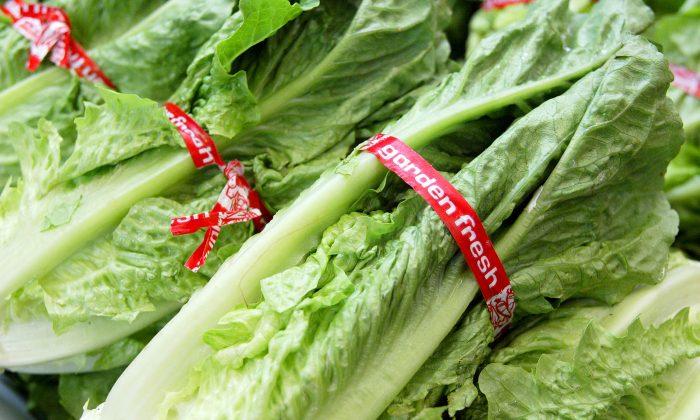“Based on new information, CDC is narrowing its warning to consumers. CDC is advising that U.S. consumers not eat and retailers and restaurants not to serve or sell any romaine lettuce harvested from the Central Coastal growing regions of northern and central California,” according to the CDC in a food safety alert.
Consumers and retailers are urged to check bags or boxes of romaine lettuce for a label indicating where the lettuce was harvested.
“If you do not know where your romaine lettuce was harvested, do not eat it and throw it away,” the CDC stated.
“Specifically, current evidence indicates this romaine was harvested in the Central Coast growing regions of northern and central California,” stated an FDA report.
The warning for romaine lettuce from the red-flagged California area applies to all forms of romaine lettuce, including romaine heads, romaine hearts, and salad mixes.
However, romaine lettuce labeled with a harvest region outside of the Central Coastal growing regions of northern and central California are no longer regarded as linked to this outbreak.
Romaine lettuce from the desert growing region near Yuma, California, Florida, and Mexico is not linked to this outbreak.
Lettuce from a greenhouse or grown hydroponically is also safe.
The investigation by the FDA and CDC, along with state and local agencies, is still ongoing. The Public Health Agency of Canada (PHAC) and Canadian Food Inspection Agency are also coordinating with U.S. agencies as they investigate a similar outbreak in Canada.
As of Nov. 26, some 43 people were infected, including 16 who have been hospitalized, as a result of the outbreak in 12 states, the agency stated, adding that no deaths have been reported.
Illnesses have been reported in California, Connecticut, Illinois, Massachusetts, Maryland, Michigan, New Hampshire, New Jersey, New York, Ohio, Rhode Island, and Wisconsin, according to a CDC statement.
Of the 11 reported cases, about 26 percent of them were from California.
No recall was issued for this outbreak in the latest CDC alert published on Nov. 26.
“Currently, the FDA does not have enough traceback information to identify the source of the contamination that would allow us to request a targeted recall from specific suppliers,” the FDA reported.
“Most people get better within five to seven days. Some infections are very mild, but others are severe or even life-threatening,” the CDC stated on its website.
“Most people with an [E. coli] infection start feeling sick three to four days after eating or drinking something that contains the bacteria. However, illnesses can start anywhere from a day to 10 days after exposure. Contact your healthcare provider if you have diarrhea that lasts for more than three days or is accompanied by high fever, blood in the stool, or so much vomiting that you cannot keep liquids down and you pass very little urine,” the agency advises.






Friends Read Free